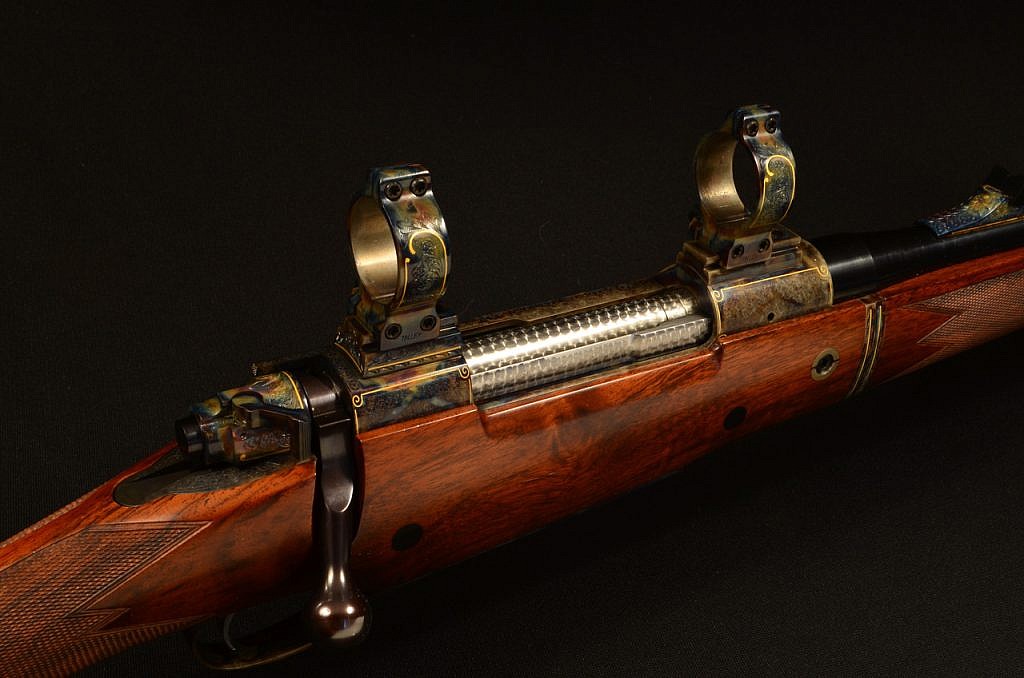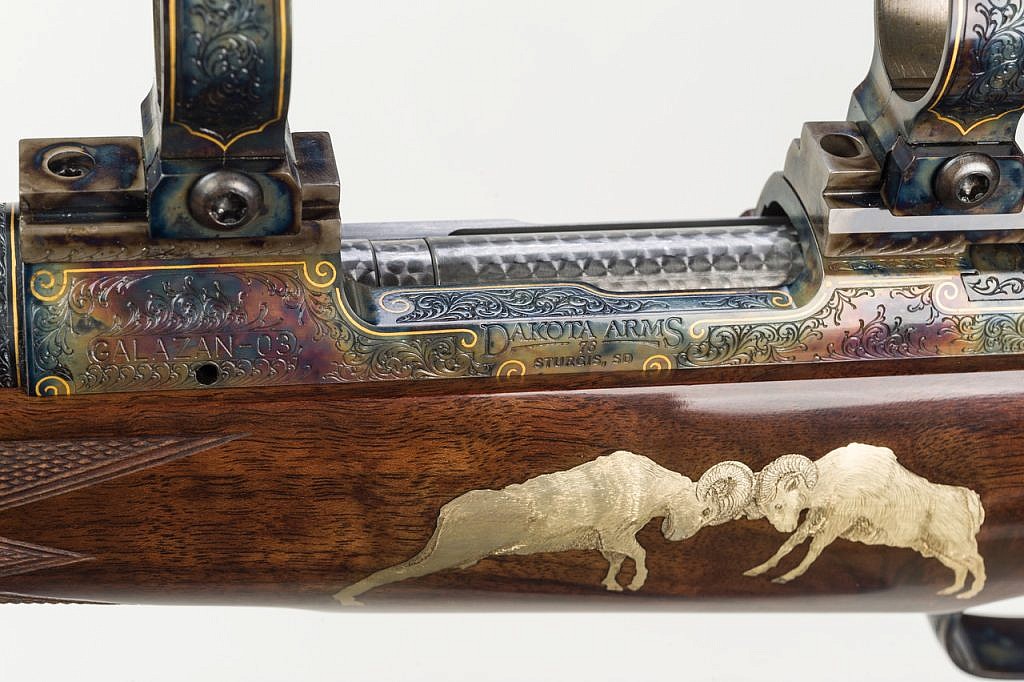
by Terry Wieland
Dakota Arms, of fond and fragrant memory, could stand as an object lesson to all who would found a company on the basis of a new rifle action, catering to the moneyed classes: ‘Tis a path fraught with peril.
It’s now almost 20 years since Dakota as I first knew it fell into the wrong hands, deteriorated, and finally disappeared. It has since been resurrected, reportedly, as Parkwest Arms, but I have no direct experience of either the company or its products. When I do, you’ll be the first to hear about it. Since its stated goal (www.parkwestarms.com) is to make rifles to Dakota’s former quality, using its materials, then I sincerely hope they succeed.
It’s odd the things you remember vividly, but I can recall almost the exact day and circumstances in 1985 that I first became aware of the Dakota 76 action. At the time, the making of superb custom bolt-action hunting rifles, by highly talented craftsmen around the country, was in full swing, using primarily the better Mauser 98 actions and pre-64 Model 70s. Both required extensive reworking, both were available in dwindling numbers, and prices were rising.
The designers of the Dakota 76 set out to combine the best qualities of both in one action, made of the best steel, machined to the highest standards. Over the years, I have heard various claims as to who, exactly, designed it. Most credit gunsmith Pete Grisel with the major share, but stockmaker Don Allen was the one who really made the idea reality. Don and his wife, Norma, established Dakota Arms in Sturgis, South Dakota, to manufacture the actions and build custom rifles. There was, undoubtedly, help from the state in doing this—Sturgis’s other major “industry” was the annual motorcycle rally which was undoubtedly profitable but, equally undoubtedly, cyclical.

Anyway, when I got to know Don and Norma in the early 1990s, the factory was humming and Don was brimming over with ideas for other high-quality rifles, and even a side-by-side shotgun. He did create the No. 10 single-shot action, and variations on the 76 included a lower-priced version (the Dakota 96) and a take-down (the Traveler).
Disaster struck in the form of cancer, and Don died in 2003. The company passed into the hands of an investment fund, whose director then asset-stripped the company, including selling off a vast stockpile of fine walnut blanks Don had amassed over the years. Dakota ended up in bankruptcy, the erstwhile director ended up in court charged with securities fraud, Dakota then was acquired by Remington, to become its custom shop, just in time to be caught up in the Remington bankruptcy circus.
At exactly what point it emerged from all that to be acquired and renamed Parkwest, I don’t know. It hardly matters. At some point I’ll make a stop in Sturgis and take a look.
After 2004, I divested myself of most of my rifles with Dakota origins, because I did not want to be seen to promote the company under its crooked management. I put it all out of my mind and moved on.
However, my admiration for, particularly, the Dakota 76 action, remained. When I discovered that Tony Galazan’s Connecticut Shotgun Manufacturing Company (CSMC) had acquired a stash of Dakota actions and barreled actions, and was building some spectacular (and spectacularly expensive) rifles on them, I could not resist.
No company in the U.S. today is making guns to match both CSMC’s quality and its level of adornment in the form of engraving, gold inlay, and intricate stock and metal work. Maybe the old companies in the halcyon days—the Parker Invincible, or the Ithaca Sousa-grade, or Winchester in the salad days of its custom shop. And Colt, certainly, starting in 1860. But today? No one, at least not in the form of factory products.

The rifle shown here is a Galazan Dakota, chambered for the venerable .300 H&H Magnum. It is built on a Dakota 76 action, engraved and gold inlaid, with Talley mounts to match. It’s the more expensive Traveler (take-down) rifle. CSMC has no dealers and sells its guns direct, so at a list price of $32,000, this qualifies as one of the most expensive production rifles in history.
An interesting sidelight: The originators of the Dakota 76 wanted to offer an action that would allow custom gunmakers to avoid the work and expense of modifying the Mauser 98 or pre-64 Model 70. At a list of $1,500 from Brownells, versus $500 for a pre-64 or $300-$600 for a 98 (this is 35 years ago) the 76 was expensive. I was told at the time that the modifications required for the latter two brought them up to about the same price, so there was no financial advantage either way.
The reason most riflemakers stuck with what they knew, rather than embracing the 76, was that they could make the modifications they wanted, and do it their way. And, it seemed, their clients agreed.
Still, if Parkwest is building 76 actions to the old Dakota quality, that’s great. Good pre-64s are now priced far beyond what you’d want to invest to strip a rifle for its action and build a custom job, and the same is true of the best Mauser 98s, military or civilian. For custom riflemakers, however, the Mauser angle is taken care of by Granite Mountain, whose 98 clones are fantastic.
Today, the custom bolt-action hunting-rifle market is a shadow of what it was 30 years ago, but the possibilities are better than ever. All you have to do is find a gunmaker capable of doing the job. And a walnut blank worthy of the effort.
Oh, yeah: You also have to find the money. There’s always a catch.
Gray’s shooting editor, Terry Wieland, realized his dream of a Dakota rifle in 1991, and carried that lovely .30-06 in Africa and America for the next ten years. Watching Dakota’s decline was heart-breaking, but as the poet said, “Beauty passes, beauty vanishes, however rare, rare it be…”
